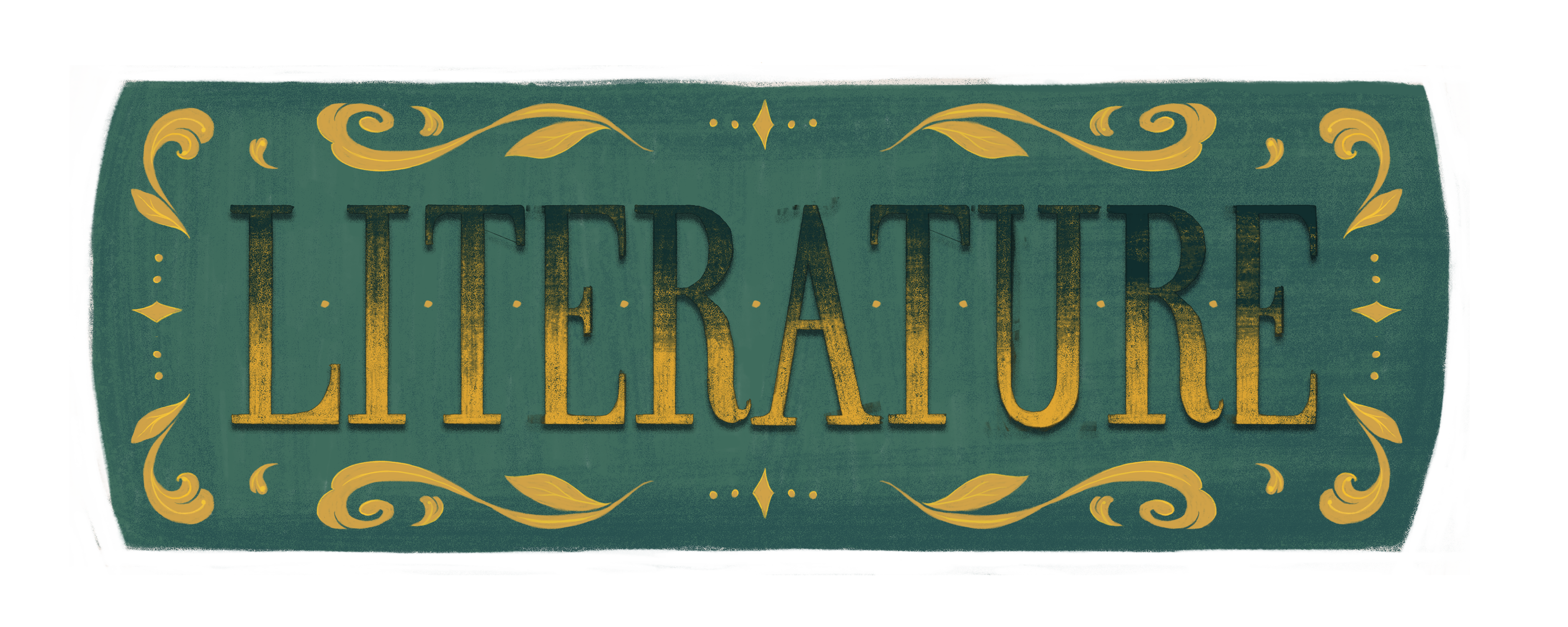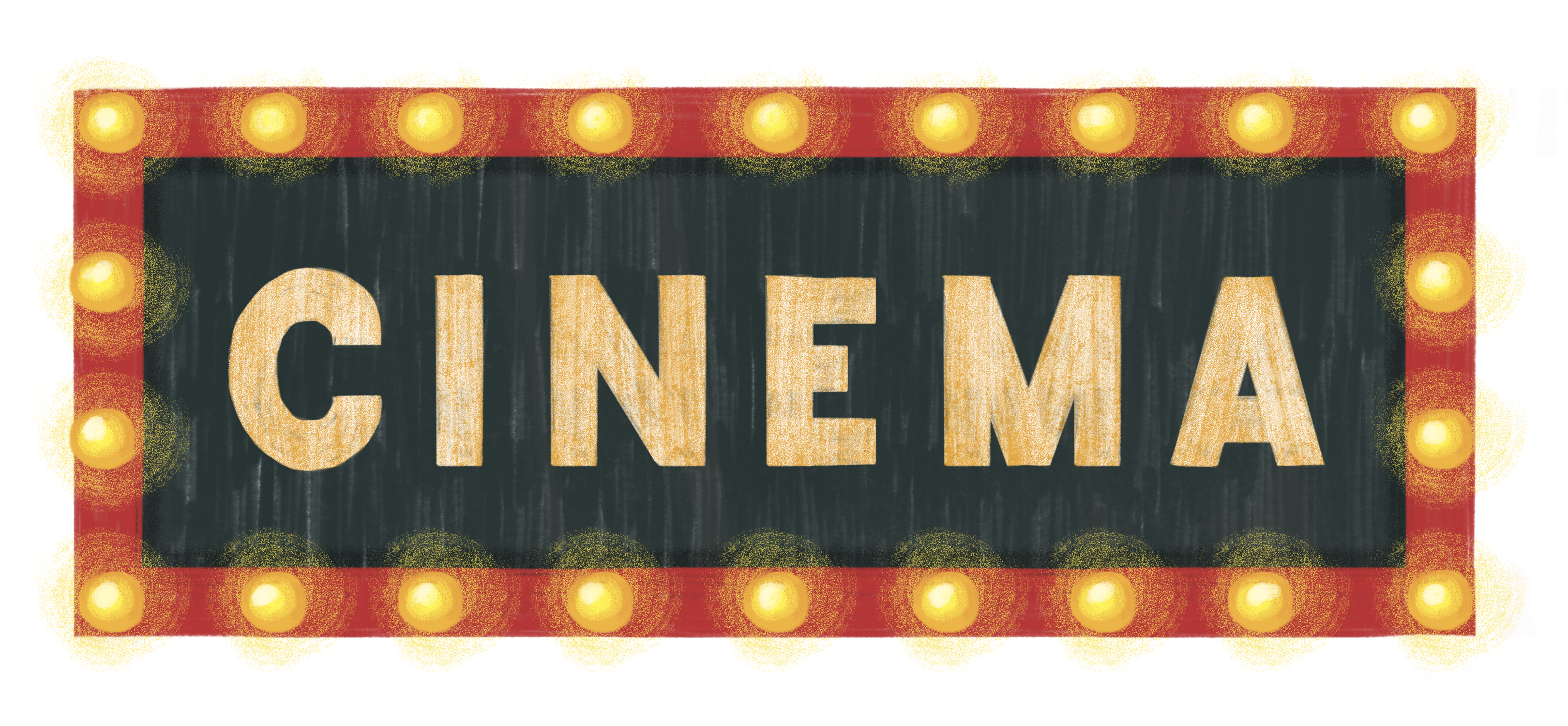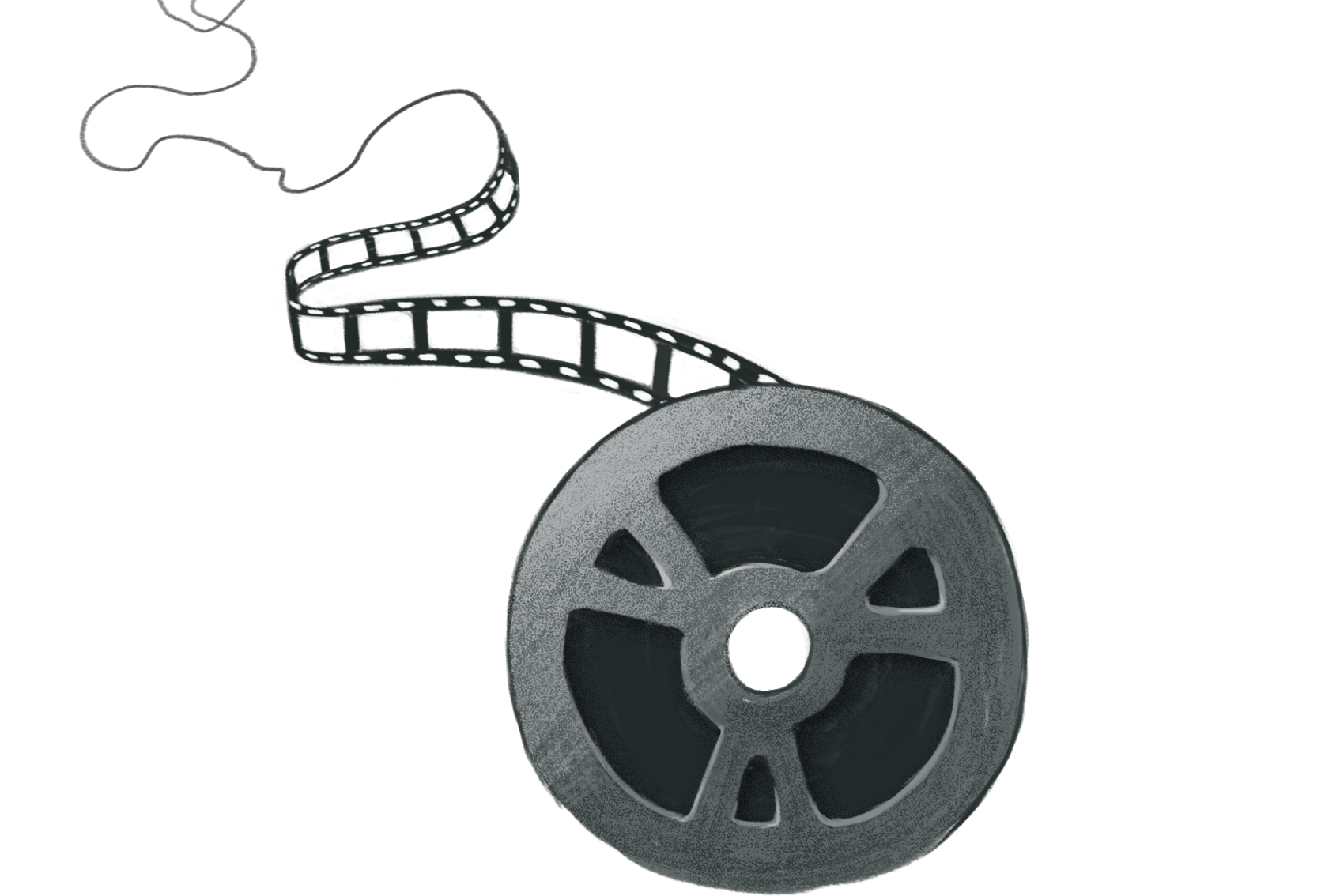ILLUSTRATED BY DANA SANMAR
WRITTEN BY KATHERINE DIAZ VILLEGAS
I don’t remember my beginning with books, but that may have been because they’ve simply just always been a part of me. I do, however, remember my many trips to the library where I would run around pulling out any and every book that piqued my interest until the stacks threatened to fall over. It wasn’t a need to escape that lead me to books, but my curiosity.
Books are so special because through words, an author can paint any realm, person or thing into existence. Storytelling has been the traditional method of passing down history and legends since the beginning, through cave drawings to sharing tales around a fire to hieroglyphics. Once stories passed on by word-of-mouth were officially transcribed, they soon became one of the most prized possessions one could own. Books have always had the responsibility to pass on information and ideas. With them, human beings have been able to learn, grow and create.
 Film enthusiasts may argue that human beings need visualization to understand a story, but I disagree. The bond a reader has with a book is one of the most transcendent relationships one could ever have. No matter how words and phrases are written and arranged, not everyone will interpret them the same way. Though the story is written the same, each reader is different and will be affected by that story in an unparalleled way. Just because the author writes the sky is blue or that the valley was vast, how a reader visualizes or connects with that small bit of context creates a world of its own. Understanding the thoughts of a character and their reasoning behind it creates a genuine bond — one that is responsible for bringing so many beloved characters to life.
Film enthusiasts may argue that human beings need visualization to understand a story, but I disagree. The bond a reader has with a book is one of the most transcendent relationships one could ever have. No matter how words and phrases are written and arranged, not everyone will interpret them the same way. Though the story is written the same, each reader is different and will be affected by that story in an unparalleled way. Just because the author writes the sky is blue or that the valley was vast, how a reader visualizes or connects with that small bit of context creates a world of its own. Understanding the thoughts of a character and their reasoning behind it creates a genuine bond — one that is responsible for bringing so many beloved characters to life.
A book’s limits go as far as the reader’s imagination. No matter the genre, books awaken the brain in a way that pushes us to understand and imagine for ourselves. As the protagonist and characters grow, so does the reader.
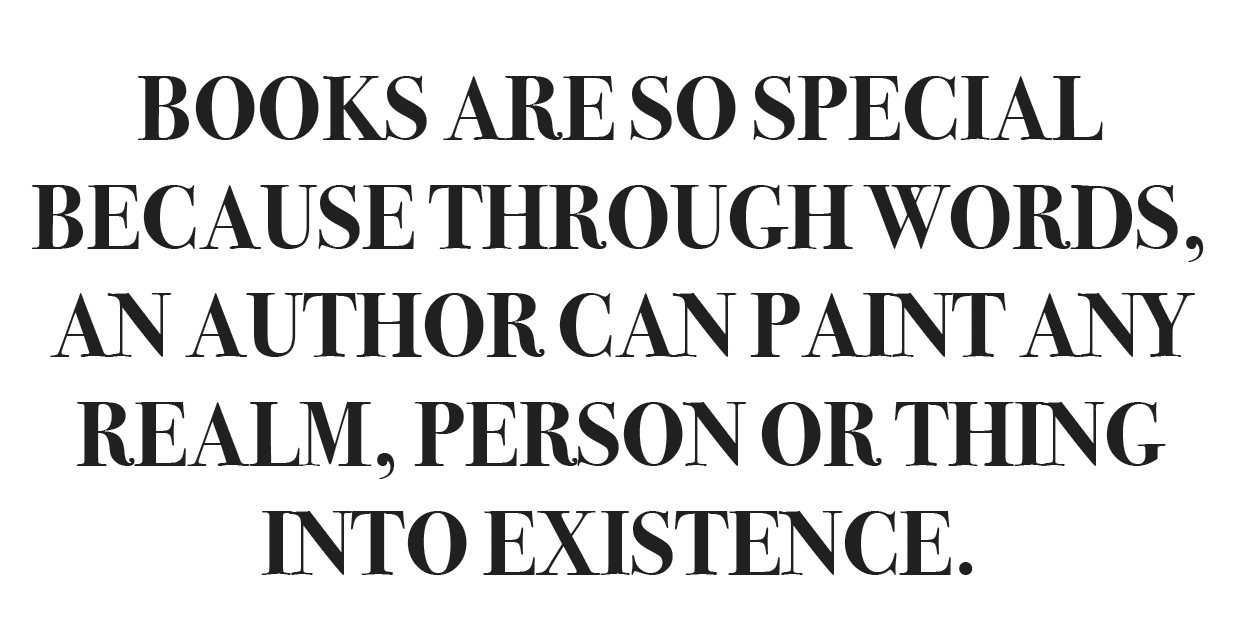 In films, which are only possible with the effort of countless people and departments, the story only lasts an hour or two. Even in series, there’s still a certain type of limitation regarding time. Whenever films are adapted from books, more likely than not, you’ll enjoy reading the book even more than seeing the film. This is because there are more details and context in books. There’s no budget or post-production, producers or actors — there’s only the author, the story and the reader. Stripping away rules and opinions leads to the possibility to dream and create.
In films, which are only possible with the effort of countless people and departments, the story only lasts an hour or two. Even in series, there’s still a certain type of limitation regarding time. Whenever films are adapted from books, more likely than not, you’ll enjoy reading the book even more than seeing the film. This is because there are more details and context in books. There’s no budget or post-production, producers or actors — there’s only the author, the story and the reader. Stripping away rules and opinions leads to the possibility to dream and create.
I’ve read well over a 1,000 books and never thought I would have a favorite until I stumbled upon “The Night Circus” by Erin Morgenstern. To me, this book was the puzzle that I never knew I needed to solve. It pushed what I had expected from novels and stories to a rich dream, interlacing past and present with a parade of characters each too extraordinary to not be known.
Books today are not a tool of the past, they’re ever-evolving. They will forever be a sort of dependency we’ll have. Like history, books are survivors that will live another day to tell their tale.
Written by Mikael Trench
Films, historically speaking, are still very young forms of storytelling, with the first films ever made released during the 19th century. It’s easy to see why this art form is looked down upon by so many compared to books. Growing up, older generations warned us about the dangers of too much screen time. Equally likely is the chance your elders recommend to read instead. While literature has its perks, filmmaking is the superior storytelling medium.
What makes the art of filmmaking more admirable is the act of restraint. Books can tell any story featuring any ideas the author can imagine. While this gives books a distinct sense of escapism, films must be more inventive. Since films create fantastic scenes with budgetary limitations, filmmakers must find ways to balance these elements. From “Mary Poppins”(1964) to “Avatar” (2009), there’s bound to be a few films you admire for their ability to create mesmerizing illusions. The ability for filmmakers to work through these difficulties allows for an even greater appreciation of this craft.
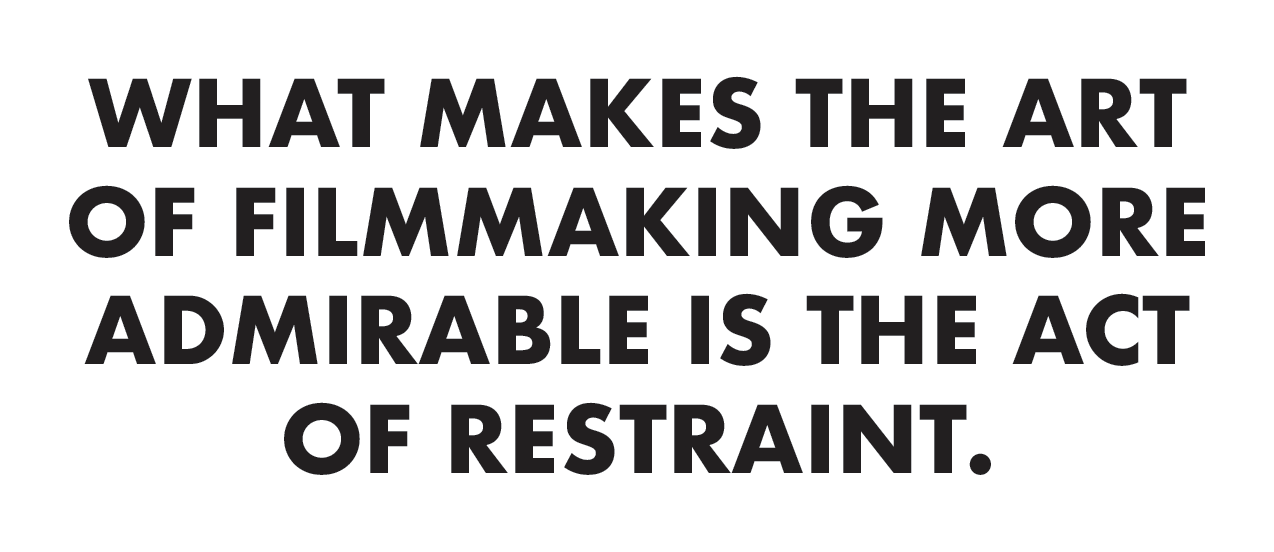 Films can throw whatever visuals they want at us, but if the storytelling itself is no good, then there’s little to care about. What makes films stronger in this area is the variety of ways they tell their stories. Books allow little room for how they present their worlds other than blatantly putting it on the page for the reader to imagine. While that interpretation does add to the experience, there is still an element of disconnect that can leave some feeling underwhelmed.
Films can throw whatever visuals they want at us, but if the storytelling itself is no good, then there’s little to care about. What makes films stronger in this area is the variety of ways they tell their stories. Books allow little room for how they present their worlds other than blatantly putting it on the page for the reader to imagine. While that interpretation does add to the experience, there is still an element of disconnect that can leave some feeling underwhelmed.
From the birth of cinema, silent films always found ways to incorporate traditional literary storytelling techniques in a visual manner that allowed the audience to become far more engrossed in the experience than simply reading words. This not only offered for more enthralling moments to be made, but also for filmmaking to transcend the storytelling mold and become something far more universal. Storytelling in film must be inventive to be effective.
The legendary montage from the first 10 minutes of “Up” (2009) is a breathtaking piece of filmmaking. The animation and musical score visualize the couple’s story better than any words could. Regardless of culture or background, anyone could watch this sequence and comprehend the story while also getting wrapped up in the emotional context. It’s a testament to the craft put into every frame that makes up a film.
Films can achieve greater legacies than the books they are based on. Countless films from “The Shawshank Redemption”(1994) to “It’s a Wonderful Life” (1946) have surpassed their literary counterparts. These films differ heavily from their books, but no one seems to care. They were crafted with such ingenuity that audiences are more inspired by the big screen adaptations.
Films and books are two different works of art. Both have the power to allow us to escape into worlds we can only imagine. But filmmaking took the essence of storytelling and brought it to new and exciting heights before our very eyes. Whether they make us laugh, cry, scream or think, you can bet that a dedicated team is working their hardest to make those scenes last a lifetime.


